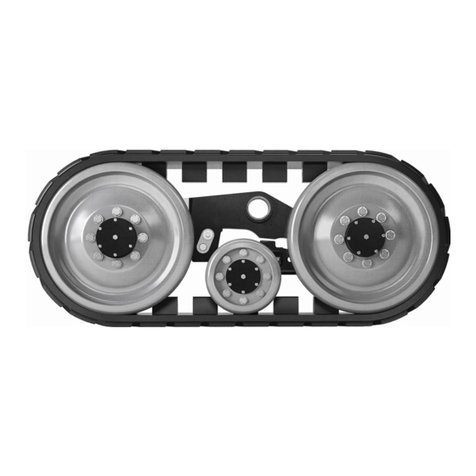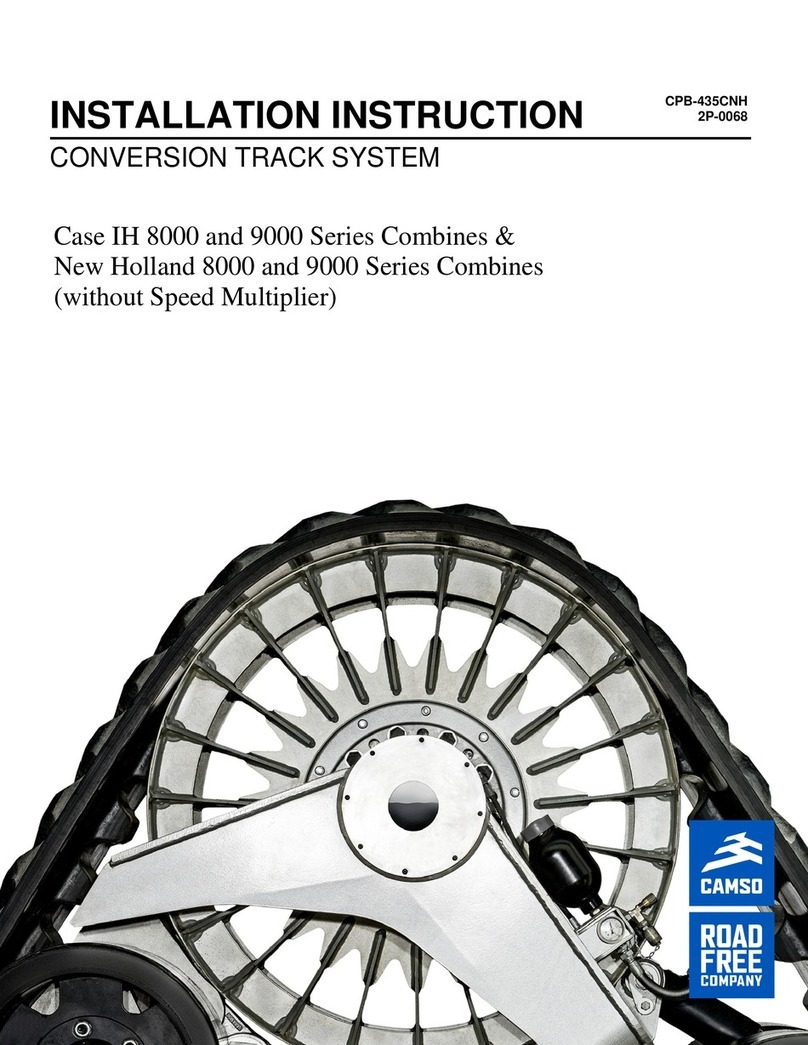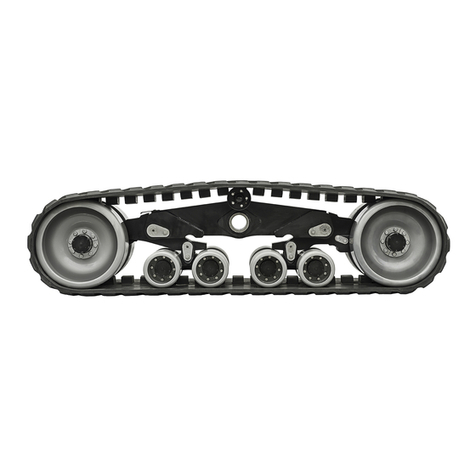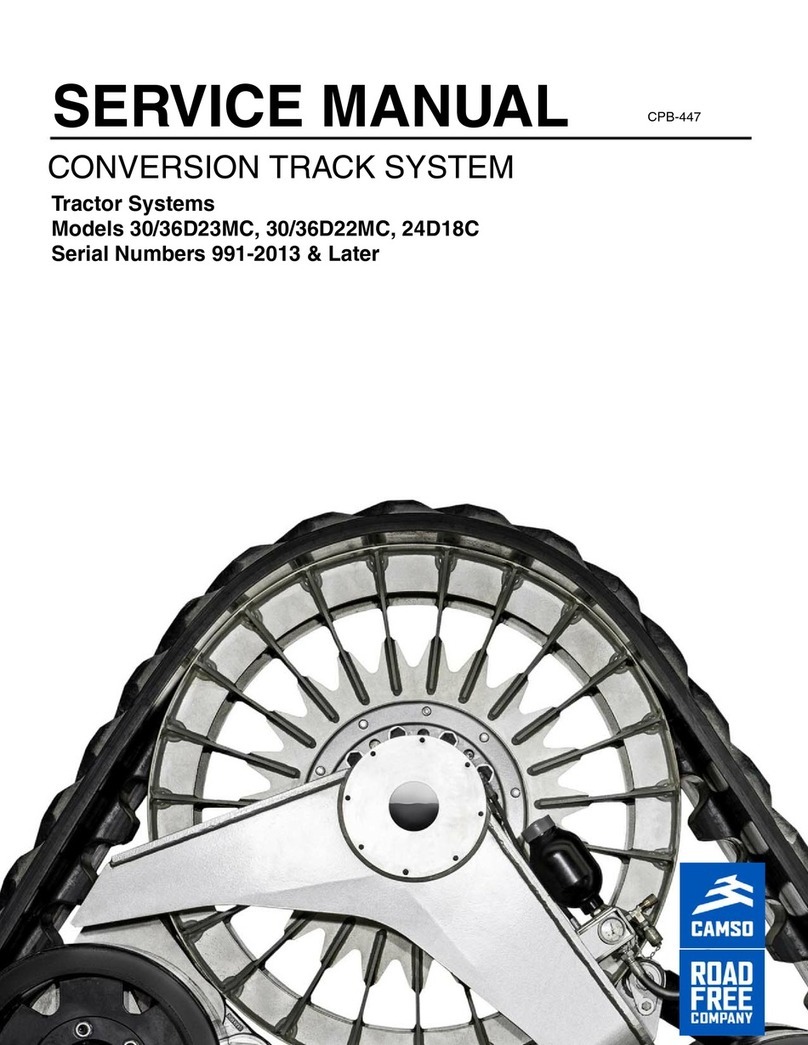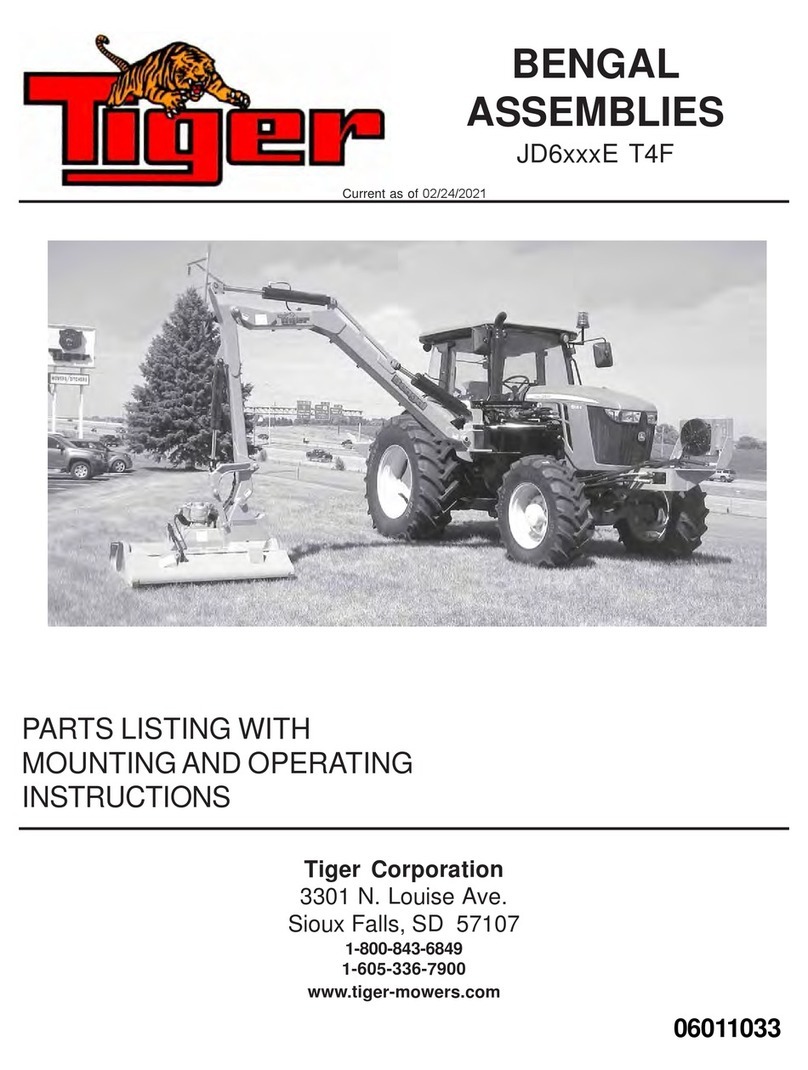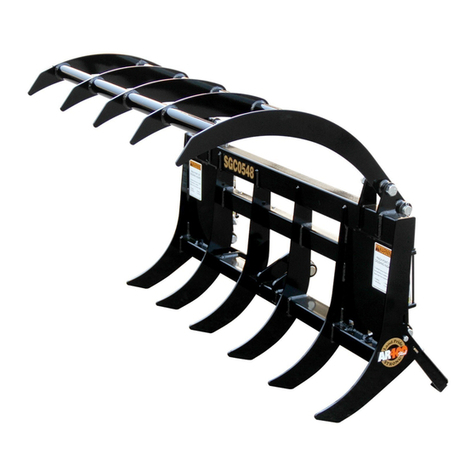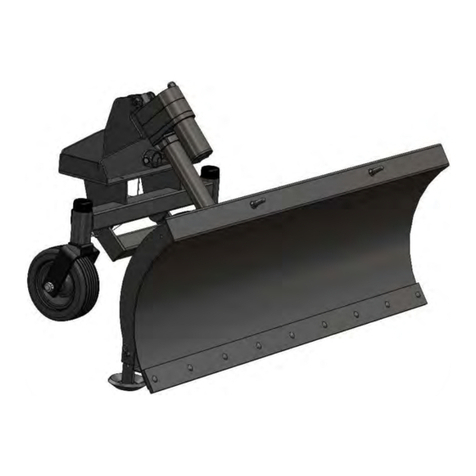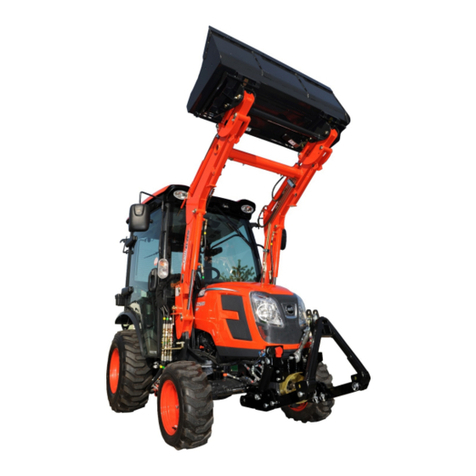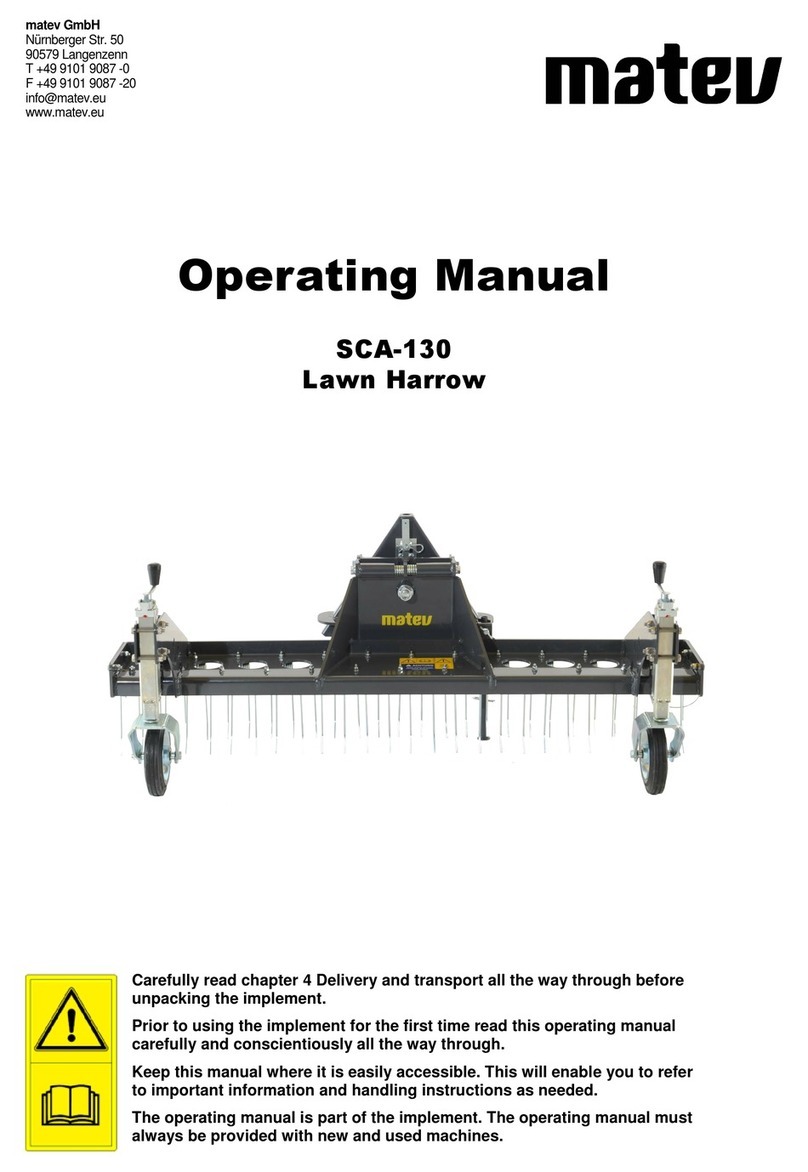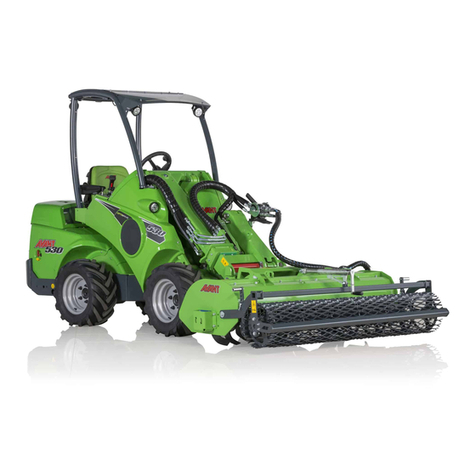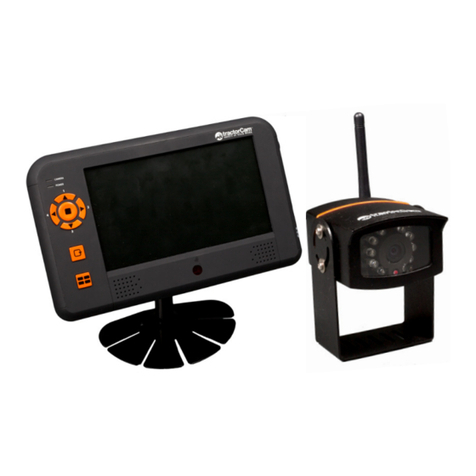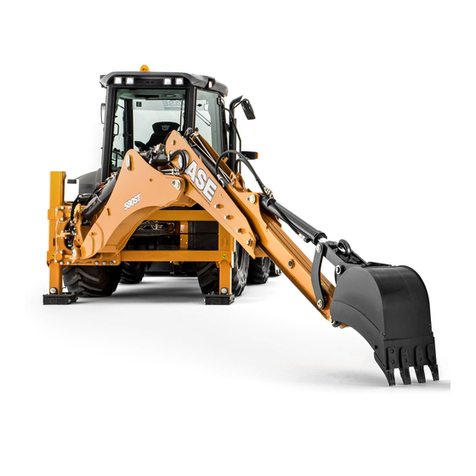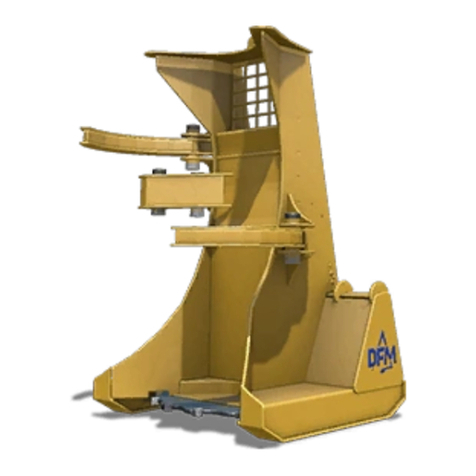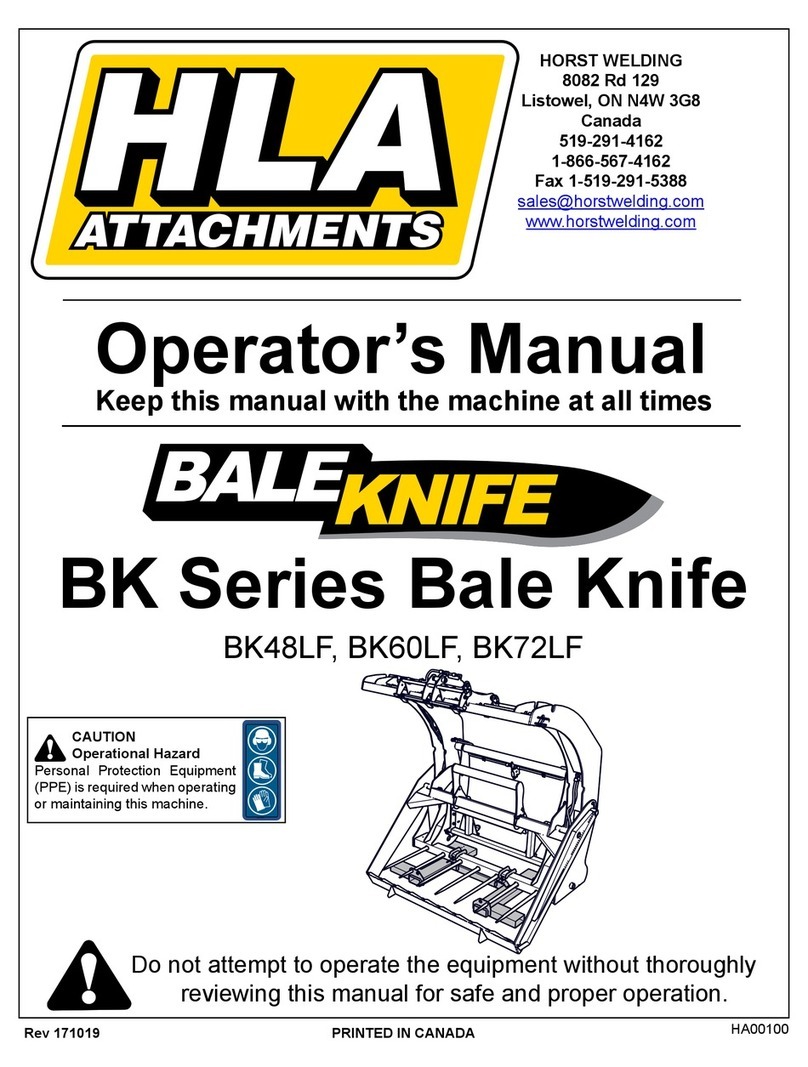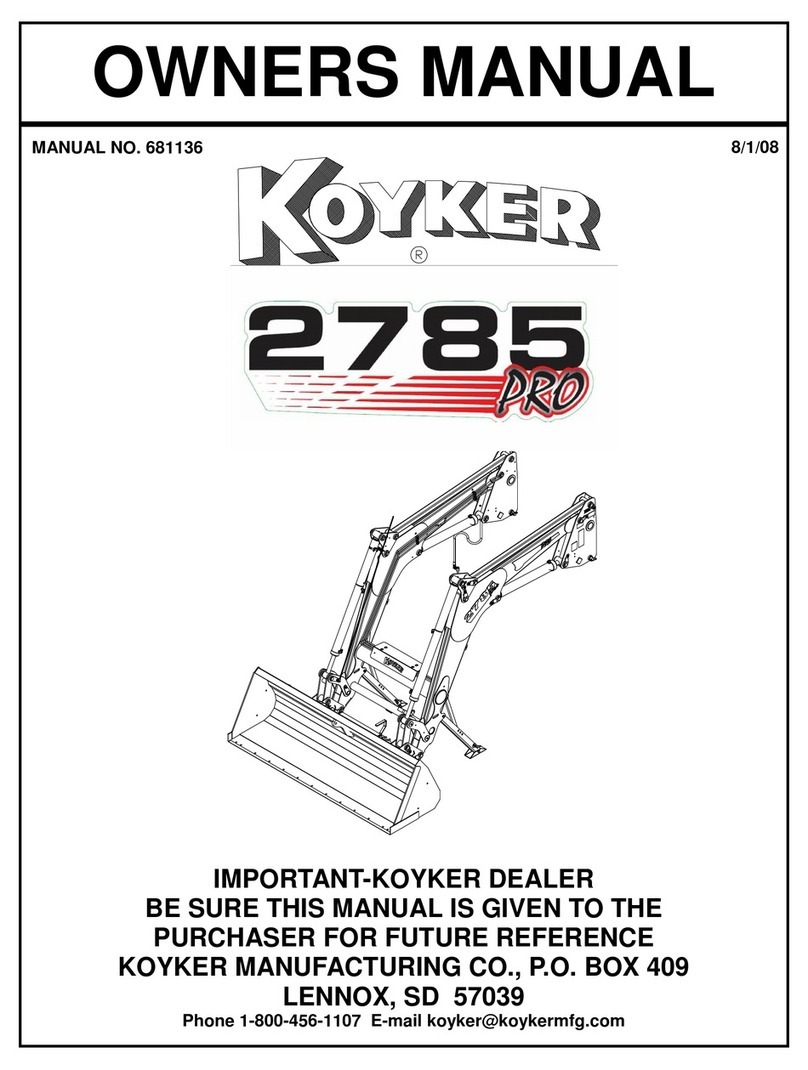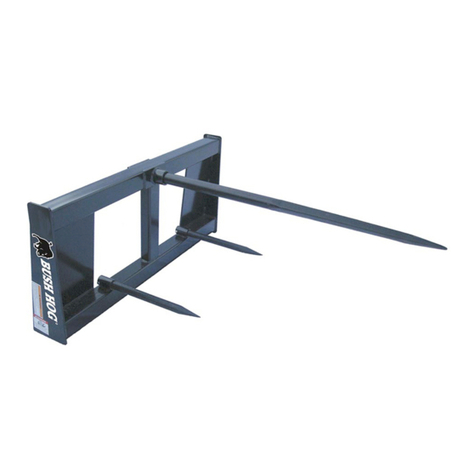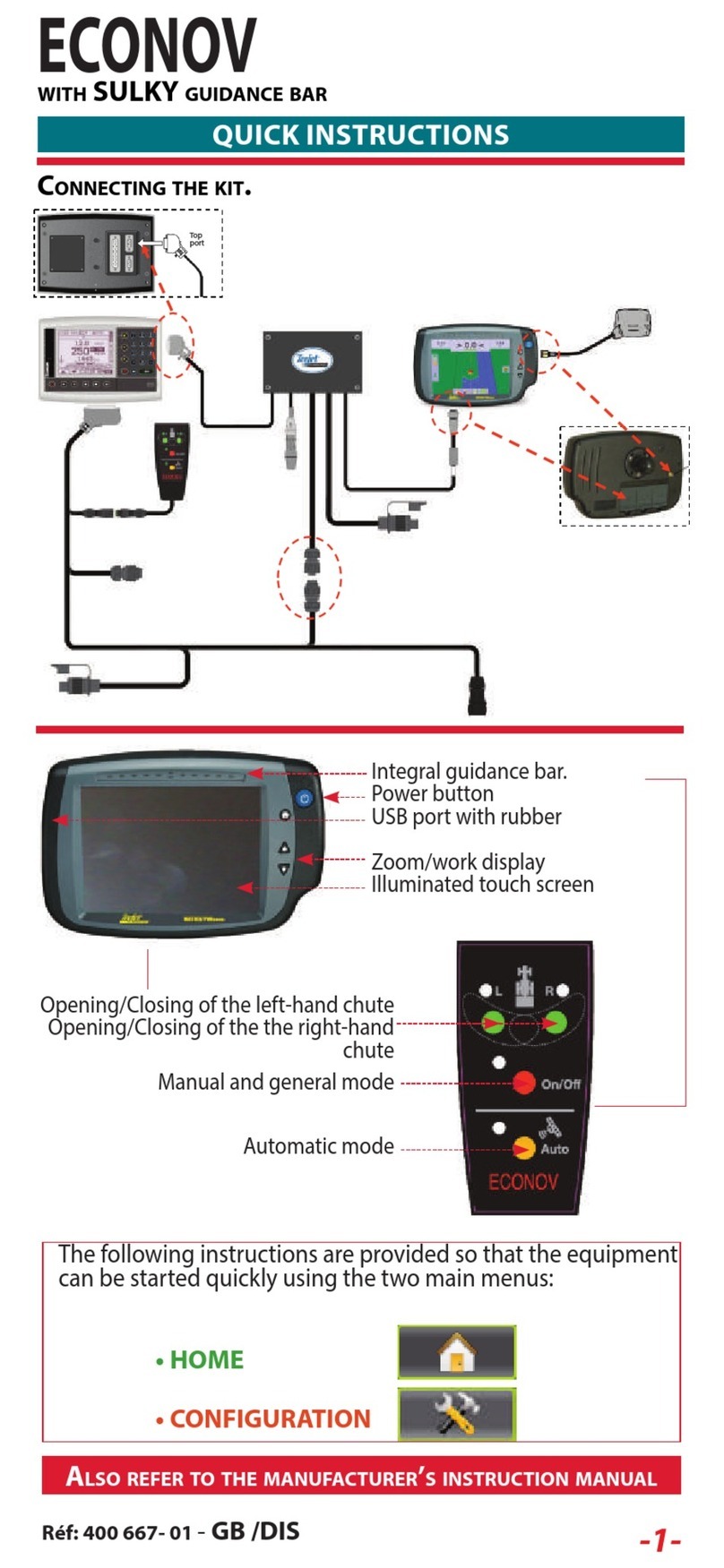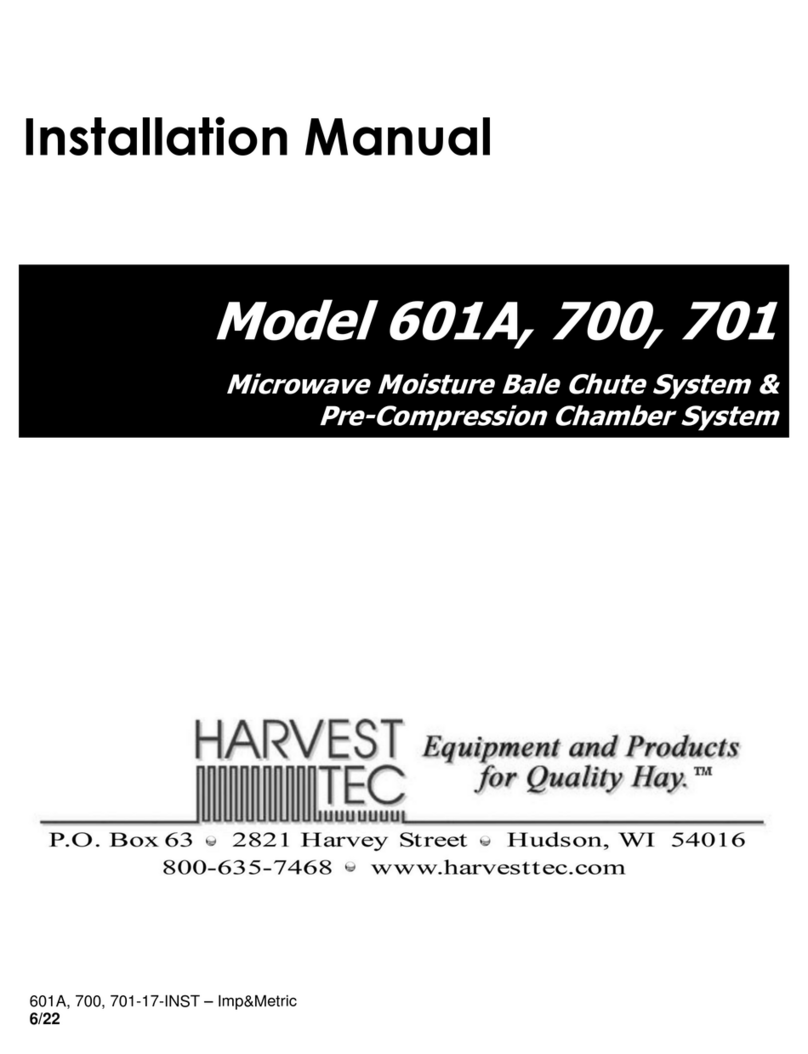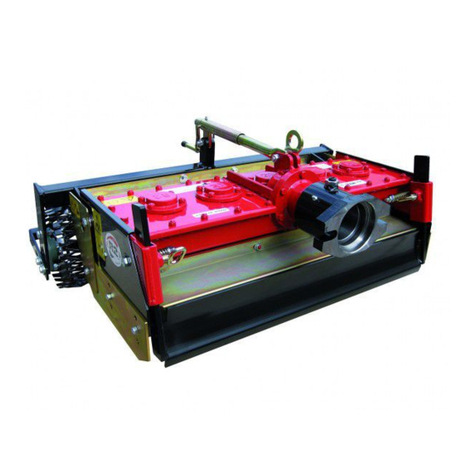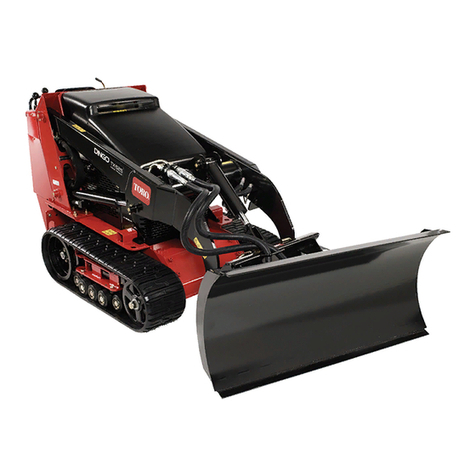CAMSO 100TTS User manual

OPERATING
MANUAL
2022
CAMSO 100TTS
2800 7th Avenue North
Fargo, ND 58108
Phone: (701) 232-4199
Fax: (701) 234-1716
www.amitytech.com
MANUAL PART NO: 319222 RELEASE DATE: 09/2022
----

This page intentionally left blank

CPB-515
2P-0029
OPERATION AND MAINTENANCE
MANUAL
TRAILED TRACK SYSTEM (TTS)
70 Series (236” Track, Including: 70-2516, 70-2517, 70-3011, 70-3012, 70-
3611, & 70-3612)
80 & 100 Series (302” Track, Including: 80-3013, 80-3014, 100-3014, 100-30-
15, 100-3613 & 100-3614)
100 & 110 Series (324” Track, Including: 100-3612, 110-3614, 110-3615)

CPB-515 Operation and Maintenance Manual – TTS 70, 80,100, 110 Series (10-2021)2
This page intentionally left blank

CPB-515 Operation and Maintenance Manual – TTS 70, 80,100, 110 Series (10-2021)3
Table of Contents
1.0 FOREWARD .......................................................................................................................................4
1.1 Literature Information.................................................................................................................4
1.2 Maintenance Intervals................................................................................................................4
1.3 Camso Product Identification Number.......................................................................................4
2.0 SAFETY ..............................................................................................................................................5
2.1 Important Safety Information ..........................................................................................................5
3.0 GENERAL INFORMATION ................................................................................................................5
3.1 Technical Description .....................................................................................................................5
3.2 Track System Components ............................................................................................................6
3.3 Specifications and Dimensions.......................................................................................................8
3.5 Transport Limitations ....................................................................................................................10
3.6 Minimum Turning Radius Limitations ...........................................................................................11
3.7 Operational Guidelines .................................................................................................................11
3.8 Track Break-in Procedures...........................................................................................................12
4.0 TRACK SYSTEM INSTALLATION ...................................................................................................12
4.1 Handling of the Track System ......................................................................................................12
4.2 Track System Installation..............................................................................................................13
5.0 SCHEDULED MAINTENANCE ........................................................................................................17
5.1 General information ......................................................................................................................17
5.2 Lubricant Table .............................................................................................................................17
5.3 Maintenance Schedule .................................................................................................................18
5.3.1 Daily maintenance or every 10 working hours ..........................................................................18
5.3.2 Weekly maintenance or every 50 working hours ......................................................................19
5.3.3 Monthly maintenance or every 100 working hours....................................................................19
5.3.4 Annual maintenance or every 500 working hours.....................................................................20
5.3.5 Every 5 years or 2000 working hours........................................................................................20
5.9 Off Season Storage ......................................................................................................................21
6.0 ROUTINE MAINTENANCE ..............................................................................................................21
6.1 Check Track Alignment.................................................................................................................21
6.2 Track Alignment Procedure ..........................................................................................................22
6.3 Track system inspection ...............................................................................................................23
6.4 Adjusting track tension..................................................................................................................24
6.6 Track Installation...........................................................................................................................24
7.0 TROUBLESHOOTING......................................................................................................................26
8.0 ADDITIONAL INFORMATION ..........................................................................................................26
9.0 WARRANTY CERTIFICATE.............................................................................................................27

CPB-515 Operation and Maintenance Manual – TTS 70, 80,100, 110 Series (10-2021)4
1.0 FOREWARD
This manual provides important operation and maintenance instructions to maximize the
benefits of the Camso Trailed Track System (TTS) and to ensure performance in the field
for many years to come.
1.1 Literature Information
This manual was prepared with the latest information available at the time of publication.
Read this manual carefully before operating or servicing the undercarriage(s).
The photos, illustrations, and data used in this manual were current at the time of printing,
but due to possible production changes, your undercarriage may vary slightly. Camso
reserves the right make changes to new production undercarriages as necessary without
notification. This document must be considered as an integral part of the rubber track
system, it must always be available for reference near the machine, even in the case of
sale, and until end of life. Should the operations and maintenance manual supplied with
the track system be damaged or missing, please see your dealer to request another copy
and/or contact Camso immediately.
1.2 Maintenance Intervals
Use the pulling machine hour meter to determine servicing intervals. Calendar intervals
are also shown and can be used instead of hour intervals. Recommended service should
always occur on the interval that occurs first. Under extremely dusty or wet operating
conditions more frequent lubrication may be needed. Perform service on items at
multiples of the original requirement. For example, at every annual or 250 hour service
interval, also service items listed under monthly or 100 hours, weekly or 50 hours, and
daily or 10 hours.
1.3 Camso Product Identification Number
The track system PIN plates will display the model and manufacturing date and sequence
number on both LH and RH undercarriage system. Each undercarriage has a unique
serial #.
If a serialized axle is also provided by Camso, it will also have a plate installed in the
center of the axle. Track part # and serial # are embossed into the edge of the track
carcass for ease of identification.
Undercarriage
Serial #
Model #
Track
Part #
Serial #
(on edge of track carcass)

CPB-515 Operation and Maintenance Manual – TTS 70, 80,100, 110 Series (10-2021)5
2.0 SAFETY
2.1 Important Safety Information
Read and understand this manual, the operation manual for the equipment the
undercarriage is mounted to, and the manual for all attachments before operating,
servicing or repairing an undercarriage.
Most personal injuries occurring during equipment operation, maintenance, or repair are
caused by failure to observe basic safety rules and precautions. In most cases, an injury
can be avoided by recognizing hazardous situations before an injury occurs.
A person must be alert to potential hazards. This person should also have the necessary
training, skills and tools to perform these functions properly.
Improper operation and maintenance of this product can be hazardous and may result in
injury or death.
Do not perform any lubrication, maintenance or repair on this product, until you have read
and understood this Operators manual.
Safety precautions and warnings are provided in this manual. If these hazard warnings
are not heeded, bodily injury or death could occur to you or to other persons.
Not every possible circumstance that might involve a potential hazard can be anticipated.
The warnings in this publication are not all inclusive. If a tool, procedure, work method or
operating technique that is not specifically recommended by Camso is used, you must
satisfy yourself that it is safe for you and for others.
You must also make sure that the product will not be damaged or be made unsafe by the
operation, lubrication, maintenance or repair procedures that you choose. The
information, specifications, and illustrations in this publication are on the basis of
information that was available at time of printing.
3.0 GENERAL INFORMATION
3.1 Technical Description
The Camso TTS allows machines to move on muddy and soft soils which have limited
carrying capacity. The wide supporting surface of the track system also reduces soil
compaction.
Camso track systems are mounted on an axle frame. Certain equipment requires a
special axle to be installed prior to track system installation. Please contact your dealer
for more information.
Camso track systems are designed to maximize the performance and productivity of your
pull-behind applications with:
•Even weight distribution to easily and safely handle uneven terrain
•Excellent flotation to minimize soil disturbance (40 - 70% ground pressure reduction vs. tires)
•Maximum reliability to assure you get the job done anytime, anywhere

CPB-515 Operation and Maintenance Manual – TTS 70, 80,100, 110 Series (10-2021)6
TTS uses Camso rubber tracks, specifically designed for pull-behind applications to
provide:
• Reduced vibration during transport
• Lower turning resistance
• Minimal soil disturbance
• Long life
The patented undercarriage design incorporates independent movement of the midrollers
both front-rear and side-side delivering:
• Even weight distribution, allowing tracks to follow ground contours
• A smooth ride over rough terrain
• Reduced point loads increasing longevity of the undercarriage and implement
components
Besides the above listed characteristics, Camso rubber track systems introduce other
advantages:
•Reduced power requirements on soft soils
•Minimal possibility of rubber track de-tracking from the undercarriage
•Adequate roading speed
•Limited soil damage, even during end of field maneuvers
•Reduced risk of self-sinking in the mud in case of slippage
3.2 Track System Components

Frame
The main frame consists of a weldment or casting which hangs the front and rear link arms.
The front alignment yoke and rear tension link are cast members, allowing for close
tolerance machining and structural rigidity.
Axles
Front and rear axles are machined from the yoke castings, allowing for dimensional stability
and few moving parts. They feature oil bath hubs mounted on tapered bearings and
mechanical seals for extreme working conditions. Each hub has its own oil reservoir with
access port for maintenance and checking oil levels.
Idlers and Midrollers
The idlers have the function of guiding the rubber track by acting on the lateral surfaces of
the guide lugs. The midrollers distribute the majority of the machine weight to the ground.
They are mounted on pivoting arms connected to the frame reducing vibration and shock
loads.
Track tension spring
Alignment Bolt 221 ft-lb (300
Nm) & Lock Plate Bolt 96 ft-
lb (130 Nm). (2 per
undercarriage, 1 each side)
Front and rear Idler hubs,
500 ml of universal
trandraulic fluid (4 Hubs
per undercarriage). Plug
torque is 25 ft-lb (34Nm)
Midroller Oscillation Cavity, 165
ml of universal trandraulic fluid
(2 or 4 per undercarriage
depending on the model). Plug
torque is 25 ft-lb (34Nm)
Midroller hubs, 215 ml of universal
trandraulic fluid (4 or 8 Hubs per
undercarriage depending on the
model). Plug torque is 25 ft-lb
(34Nm)

CPB-515 Operation and Maintenance Manual – TTS 70, 80,100, 110 Series (10-2021)8
Tensioning system
The tensioning system is located between the 2 rear idlers. The tension force is provided
by a mechanical spring mechanism. Track tension is provided by the spring and does not
need adjustment during operation and changing field conditions. Provisions are made to
compress the spring allowing for removal of idlers and track assemblies during
maintenance and servicing.
Rubber track
The rubber tracks are manufactured with high quality rubber and high strength steel cabling
inside for superior durability and reliability. The tread layout ensures good flotation,
excellent life, and self-cleaning characteristics.
3.3 Specifications and Dimensions
TTS Models Track Width Overall
Height
Overall
Length
Ground
Contact -
Per Pair
# Bogie
Axles
Per UC
Capacity -
Per Pair
(in)
(in)
(in)
(sq-in)
(lbs)
70 Series
70-2516
25.0
36.1
103.5
3370
2
70,000
70-2517
25.0
36.1
103.5
3370
2
70,000
70-3011
30.0
36.1
103.5
4044
2
70,000
70-3012 30.0
36.1
103.5
4044
2
70,000
70-3611
36.0
36.1
103.5
4853
2
70,000
70-3612
36.0
36.1
103.5
4853
2
70,000
80 Series
80-3013
30.0
40.3
136.2
6006
4
80,000
80-3014
30.0
40.3
136.2
6006
4
80,000
100 Series
100-3014 30.0
40.3
136.2
6006
4
100,000
100-3015
30.0
40.3
136.2
6006
4
100,000
100-3613
36.0
40.3
136.2
7207
4
100,000
100-3614 36.0
40.3
136.2
7207
4
100,000
100-3612
36.0
40.3
147.4
8014
4
100,000
110 Series
110-3614
36.0
40.3
147.4
8014
4
110,000
110-3615
36.0
40.3
147.4
8014
4
110,000

CPB-515 Operation and Maintenance Manual – TTS 70, 80,100, 110 Series (10-2021)9
3.4 Weight Limitations
Camso track systems are limited to operating weights as listed in the table below. Do not
exceed these weight limitations or track system damage or component failure may result.
Series
Total Scale Weight Capacity per Set (2 undercarriages)
Kg
Lbs
70
31,750
70,000
80
36,300
80,000
100
45,350
100,000
110
49,885
110,000
WARNING
Exceeding maximum weight capacity may result in equipment and
property damage, injury, death and void warranty coverage

CPB-515 Operation and Maintenance Manual – TTS 70, 80,100, 110 Series (10-2021)10
3.5 Transport Limitations
Camso track systems are designed for field use and field operational speeds. High speed
transport, especially with loaded implements, is not recommended and may result in track
damage due to heat. If extended transport is required between operating locations, the
following speed and duration limits should be observed:
WARNING
Exceeding speed limitations may result in equipment and property
damage, injury, death and void warranty coverage.
If additional distances are required, a 30 minute cool down period is recommended before
transport is resumed. Absolute speed and duration levels may vary, depending on system
type and ambient conditions. Limitations as listed, help avoid system heat buildup that
could cause reduction in track life.

CPB-515 Operation and Maintenance Manual – TTS 70, 80,100, 110 Series (10-2021)11
3.6 Minimum Turning Radius Limitations
Camso track systems operate best when running straight or in gentle turns. If a track
system is pivot or spot turned, the opportunity exists for soil and dirt to be ingested into
the system. Even though TTS has a tension recoil system, if that tension recoil is
exceeded, high loads in the frame and track can be generated, which may cause track or
system damage. Camso recommends that minimum turning radius limits be strictly
observed, both in the field, and also on hard ground or pavement. This will help avoid
high stresses due to debris ingestion, potential untracking situations, high twisting and
side loads, and significant ground scrubbing of the track tread bars. This especially
important when an implement is fully loaded.
Operating
Condition
Minimum Turning Radius
Field or Road
1.5 x the overall length of the tractor + implement
3.7 Operational Guidelines
•Any application differing from the ones prescribed in this manual are to be considered
improper and potentially dangerous.
•Correct track tension is required for best performance and track life.
•Camso TTS can work in extreme conditions: for operator and machine safety, be sure
to know your surroundings.
•Camso TTS is free to pivot around the main axle following ground contours. During
transition over uneven ground terrain, check for interferences and move slowly to
avoid over oscillating the undercarriage.
•Overall width and height of machine/equipment with Camso TTS could differ from the
original width and height with tires. Be sure to know actual machine height and width
as well as width restrictions prior to operation.
•Cross large ground irregularities with suitable speed reduction and/or proper approach
angle. In particular, when high, sharp bumps are crossed, move forward slowly to avoid
shocks on the machine.
•Camso TTS does not damage standard road-bed constructions. Operators must know
and respect road traffic laws.
•Rubber tracks have not been designed for extended use on the road. Camso is not
responsible for track and system damage resulting for extended road use. Long road
periods and/or roading at higher than recommended maximum speeds may cause
premature wear or failure of the track or wheels and is not a warrantable condition. To
reduce damage during roading, decrease overall machine weight and decrease
machine speed. See “Transport Limitations” section for further information.

CPB-515 Operation and Maintenance Manual – TTS 70, 80,100, 110 Series (10-2021)12
•Long runs on side slopes increase the wear on the side of guide lugs and idlers.
•Keep material out of the undercarriage. Inspect undercarriage daily, removing any
material as necessary. In some conditions inspect more frequently.
•If a machine becomes stuck, clear away as much material from the undercarriage as
possible prior to pulling the machine out.
•Avoid short turning radius turns and operation(s) especially when loaded. Spot turning
creates debris ingestion and can also induce high torque loading in the system.
•Configure drawbar and hitch correctly during field operation(s).
•Use caution when operating track systems in loose, flowing material. Loose material
can become trapped between track and idlers, resulting in track damage.
•Keep material out of the undercarriage. This may require scraping material out of tight
places and in some conditions require frequent inspection and cleaning.
3.8 Track Break-in Procedures
Guide lug wear is reduced when correct break-in procedures are followed. During the
break-in period, rolling components undergo a polishing-in process to achieve a smooth
steel to rubber interface with the guide lug. Dust and dirt act as dry lubricants during track
break-in and during normal operation to minimize heat generation and reduce rubber
stickiness. New tracks should be exposed to dry and dusty soil conditions as soon as
possible. Operation without dust or soil in the system, especially during high speed
roading, generates high levels of damaging heat. If roading must be done, a dry lubricant
such as soil, talc, graphite, oil dry, or cat litter should be applied to the guide lugs
periodically during roading until field operation resumes.
IMPORTANT: NEW SYSTEMS REQUIRING EXTENDED TRANSPORT
SHOULD BE CARRIED ON A FLAT BED AND NOT ROADED. DO NOT
ROAD A NEW SYSTEM WITHOUT FIRST CHECKING ALIGNMENT AND
INTRODUCING THE TRACKS TO DIRT OR DRY LUBRICANT
4.0 TRACK SYSTEM INSTALLATION
The Camso track systems are mounted on an axle frame. Certain equipment requires a
special axle to be installed prior to track system installation. Contact your dealer for more
information and to determine if the track system can be installed on your implement.
4.1 Handling of the Track System
The track systems can be handled by fork lifts lifting the machine from the base or by
hoists using textile bands.

CPB-515 Operation and Maintenance Manual – TTS 70, 80,100, 110 Series (10-2021)13
WARNING
Danger of crushing. Use suitable lifting devices (capacity at least 9000 lbs
(4100Kg)), wear safety equipment and observe the safety rules.
If using a fork lift use, for handling operations, be careful not to damage the
rubber track. Metal chains or cables are not recommended.
4.2 Track System Installation
1. Clean the implement thoroughly before proceeding with the installation. Removal
of dirt and debris makes access to the frame and attaching fasteners easier.
2. Move the implement to a hard, level surface to ensure a stable work area to
support the implement during the track system installation.
IMPORTANT: Locate the identification tags, as shown above, on both undercarriages,
and record the model number and serial numbers on warranty certificate for your records.
3. Raise and support the implement so the tires are just off the ground.
IMPORTANT
Safety of the installation depends on the right operation in lifting
and supporting the machine. Check the work area thoroughly and
work in a level area. Respect safe operating practices, operate in
conditions of enough light. Make sure the free spaces of the work
area are suitable for the dimensions of the parts to be handled and
for the lifting equipment maneuvers. Be careful: risk of injury.
Serial number Identification plate, unique serial
number per undercarriage

CPB-515 Operation and Maintenance Manual – TTS 70, 80,100, 110 Series (10-2021)14
4. Remove the tire and rim assemblies.
5. Remove the axle and hub assemblies from the implement frame (as required).
6. Install track fitment axle. For two axle midroller track systems, make sure the
stabilizer brackets on the axle are facing to the front of the implement. Tighten
mounting hardware.
WARNING
Danger of crushing. Use suitable lifting devices (capacity at least
9000 lbs (4100Kg)), wear safety equipment and observe the safety
rules.
If using a fork lift use, for handling operations, be careful not to
damage the rubber track. Metal chains or cables are not
recommended.
IMPORTANT
Should a motorized lifting device be used, assistance on ground
during operation of handling, coupling and assembly is needed.
Do not stand between lifting device and axle assembly when
mounting axles to implement. Be careful: risk of injury.

CPB-515 Operation and Maintenance Manual – TTS 70, 80,100, 110 Series (10-2021)15
7. Lightly grease machined surface of center pivot pin and insert into the receiver end
of the axle. Rotate the pin to align the rear mounting hole in the receiver pin.
Install the bolt and locknut provided with the kit. Tighten pin bolt and lock nut to
130Nm (96 ft-lbs).
8. Install the inner thrust washer against the axle pin flange.
9. Apply a light amount of grease to the center pivot pin.
10. Slide the undercarriage onto the axle pin. NOTE: Care must be exercised to avoid
damage to the lip seals on the center bore of the undercarriage assemblies during
installation. Using a fork truck, lift the undercarriage assembly onto the center pivot
pin.
WARNING
Make sure undercarriage is installed with track tensioner assembly
(spring) positioned to the rear of implement. DO NOT install the
track system with the tensioner positioned to the front of the
implement.
Grease this
surface

CPB-515 Operation and Maintenance Manual – TTS 70, 80,100, 110 Series (10-2021)16
11. Install outer thrust washer, retaining cap and retainer cap bolts & washers. Torque
retainer bolts to 320 Nm (236 ft-lbs)
12. Repeat steps 7 through 11 for the other of the axle assembly.
13. Remove jack stands and/or supports and lower implement to the ground.
14. Install the stabilizer bars (if not required skip to step 15) to a no pre-load condition.
Some slight play should be present at the rod ends. In special cases, some
adjustment to the stabilizer bars may be required to achieve the desired front to
rear parallelism dimension
a) For 2 axle midroller systems, attach the two, front stabilizer bars to the
mounting brackets on the axle and the brackets on undercarriage frame with
the hardware provided in the kit. Stabilizer end bolt torque 310 Nm (230 ft-lb)
b) For 4 midroller axle track systems, attach the two, front stabilizer bars and two,
rear stabilizer bars to the mounting brackets on the axle and the brackets on
undercarriage frame with the hardware provided in the kit. Stabilizer end bolt
torque 310 Nm (230 ft-lb)
c) Torque turnbuckle jam nuts to 620 Nm (457 ft-lb).
15. Check and re-torque all wheel lug bolts as follows:
Wheel bolt
diameter
Torque (Nm)
Torque (ft-lb)
M16
320
236
M20
620
457

CPB-515 Operation and Maintenance Manual – TTS 70, 80,100, 110 Series (10-2021)17
5.0 SCHEDULED MAINTENANCE
5.1 General information
Three factors: proper use, regular inspections, and maintenance are essential to ensure proper
performance and reliability of your Camso TTS track system.
It is strongly suggested to respect the recommended maintenance and inspection schedule in this
section for best track system life, proper performance, and reduced downtime.
Before any operation, clean all debris and material from the track system and make a general
analysis of the machine condition. Pay attention to wear components such as the track and
inner flanges of the wheels.Identifying and resolving issues early reduces downtime and
operating costs.
IMPORTANT
Routine and extra maintenance must be performed by qualified and
authorized personnel.
Before starting any kind of operation on the machine, disconnect the
transmission, stop the engine, set the emergency brake, remove the
key, and allow machine to stop completely and cool.
Ensure movable parts are safely secured and the proper tools are used
for the type of service being performed.
Camso is not responsible for direct or indirect damage to people or objects
due to tampering or modification of the safety devices.
5.2 Lubricant Table
Use and description
Location
Viscosity grade
Grease for heavy
mechanical components
Carrier Axle hubs/bearings
and frame pivot joints NLGI GC-LB
Oil Bath Hubs and Pivots Idlers and Midroller Hubs
and Midroller axle pivots
Northland Universal
Trandraulic Oil (or equivalent)

CPB-515 Operation and Maintenance Manual – TTS 70, 80,100, 110 Series (10-2021)18
5.3 Maintenance Schedule
Task
Daily or
10h
Weekly
or 50h
Monthly
or 100h
Annual
or 500hr
5 years or
2000hr
Inspect and clean track system
X
Inspect track condition
X
Check track alignment
X
Inspect for oil leaks on idler,
midroller hubs, and pivot axles X
Grease undercarriage and track
system pivot points
X
Check track tension
X
Re-torque wheels
X
Repack carrier roller hub bearings
(if equipped).
*
X
Replace hub and pivot oil and set
wheel bearing rolling torque. *
X
* Please refer to the Service Manual for detailed instruction
5.3.1 Daily maintenance or every 10 working hours
1. Clean and remove debris from track system. Material build-up on track system
components can lead to excessive wear and premature failure.
2. Track system inspection. Walk around the machine inspecting each track system
and axle assembly. Identifying and resolving issues early is key to improving track
system life and decreasing operating expenses. See “Track System Inspection” in
the Routine maintenance section for more information.
3. Check rubber track alignment daily by inspecting the guide lugs. If excessive wear
or chunking of the guide lug is occurring, track alignment may need to be adjusted.
For additional information, refer to the “Track Alignment Procedure” section.
4. Inspect idler, midroller, and midroller pivot axles for leaks. If any are noted, check
oil level of the hub to be sure oil is up to the fill hole when on a level surface.
This manual suits for next models
19
Table of contents
Other CAMSO Tractor Accessories manuals
